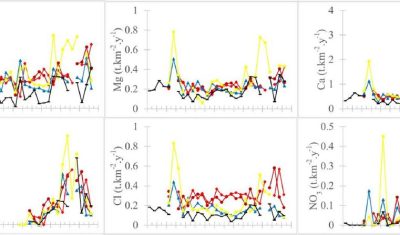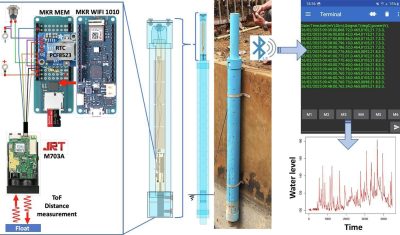Exploring the nexus between hydroclimatic variability, population growth, land use land cover change, and long-term upper Nyong Basin River chemistry (Central Africa rainforest)
Hydrological and hydrogeochemical functioning of rivers depends on the relationship between climatic variability, land use and land cover change (LULCC), and population dynamics. However, there is a scientific gap on this relationship in the humid tropical zone of Central Africa. This study, led by David Eric Komba, aims to fill this gap by examining the […]









